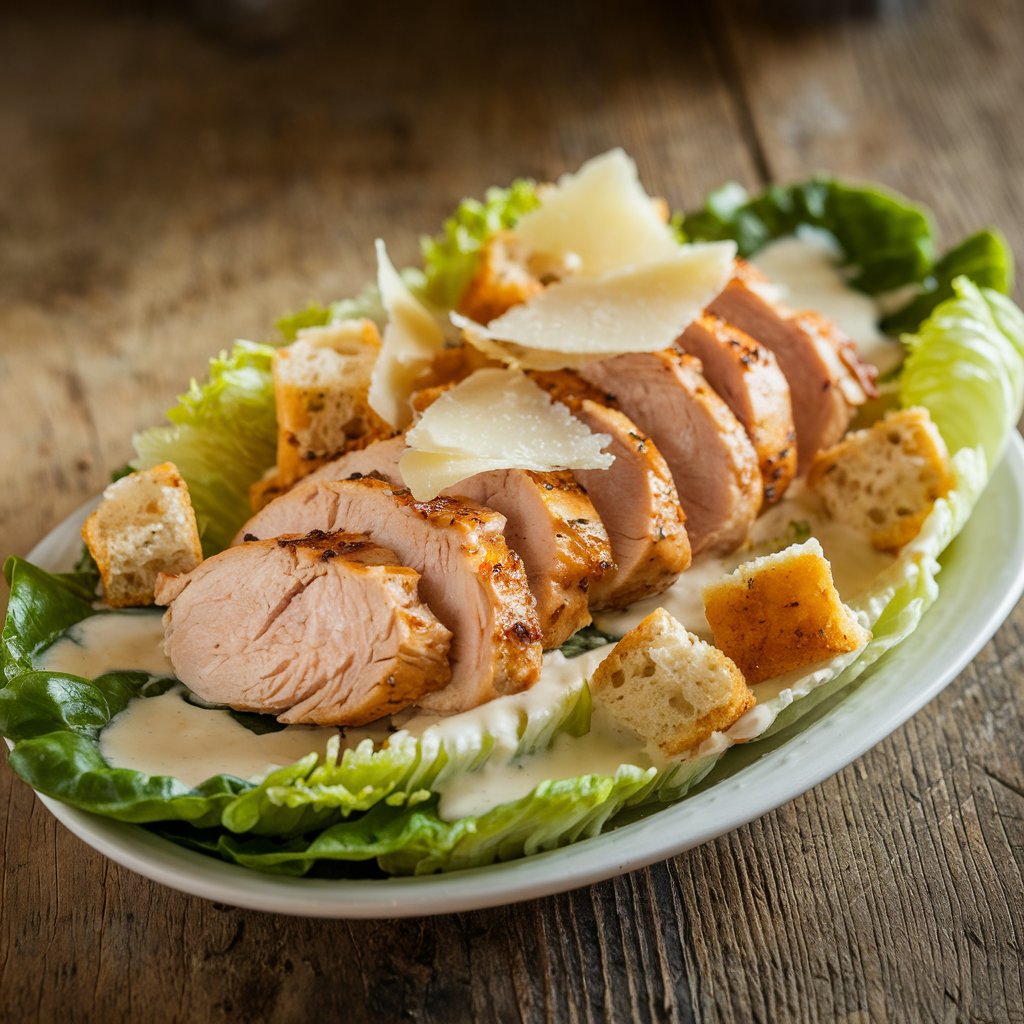Table of contents
Introduction
Few dishes strike a perfect balance between elegance and comfort like Caesar chicken. This versatile culinary delight blends the creamy, tangy flavors of classic Caesar dressing with the juicy tenderness of perfectly cooked chicken. Whether served as a salad topping, in a hearty wrap, or alongside your favorite side dishes, Caesar chicken has earned its place as a timeless recipe that satisfies all taste preferences.
The origins of this dish are rooted in the beloved Caesar salad, a creation attributed to Italian-American restaurateur Caesar Cardini. Over time, the addition of chicken transformed the salad into a more substantial and protein-rich meal. Today, Caesar chicken is celebrated for its adaptability, offering endless opportunities to experiment with flavors and presentations.
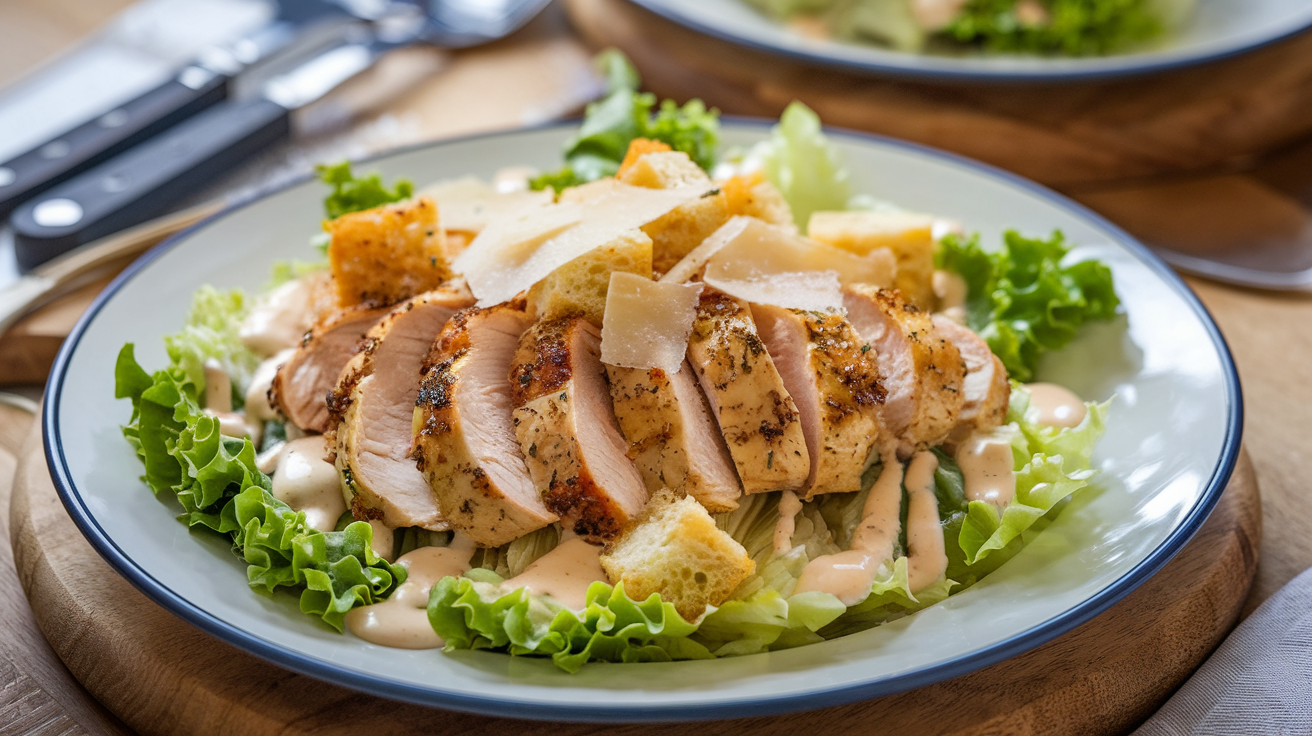
In this comprehensive guide, we’ll explore everything you need to know about Caesar chicken. From selecting the right chicken cuts and crafting the perfect Caesar dressing to mastering cooking techniques like grilling, baking, and pan-searing, this article will walk you through every step of the process. We’ll also delve into creative variations like Caesar chicken wraps, pasta dishes, and low-carb salad bowls, ensuring you have an array of recipes to suit any occasion.
Whether you’re a seasoned chef or a beginner in the kitchen, this guide will equip you with the knowledge to prepare Caesar chicken like a pro. By the end, you’ll understand why this dish is a favorite in households and restaurants alike. Let’s uncover the secrets of making the perfect Caesar chicken that will leave your guests craving more!
The Origins of Caesar Chicken
The Birth of Caesar Salad and Its Evolution
The origins of Caesar chicken are deeply intertwined with the creation of the iconic Caesar salad. This legendary dish was invented in the 1920s by Caesar Cardini, an Italian-American restaurateur who crafted it in his Tijuana restaurant. Initially, the salad was a simple combination of romaine lettuce, garlic, olive oil, croutons, and Parmesan cheese, tossed with a creamy dressing featuring anchovies and a hint of lemon.
Over time, chefs and home cooks began adding their own flair to the classic Caesar salad, and chicken became a natural complement. Its savory flavor and tender texture balanced the crisp greens and tangy dressing perfectly. This transformation elevated the dish from a side salad to a satisfying, protein-packed main course that quickly gained popularity worldwide.
Today, Caesar chicken has become a household name, embraced for its versatility and timeless appeal. It has evolved into a dish that transcends its origins, with variations appearing in wraps, pasta dishes, and even low-carb bowls. Whether grilled, baked, or pan-seared, the chicken adds a hearty element that has made this dish a favorite for casual lunches and upscale dinners alike.
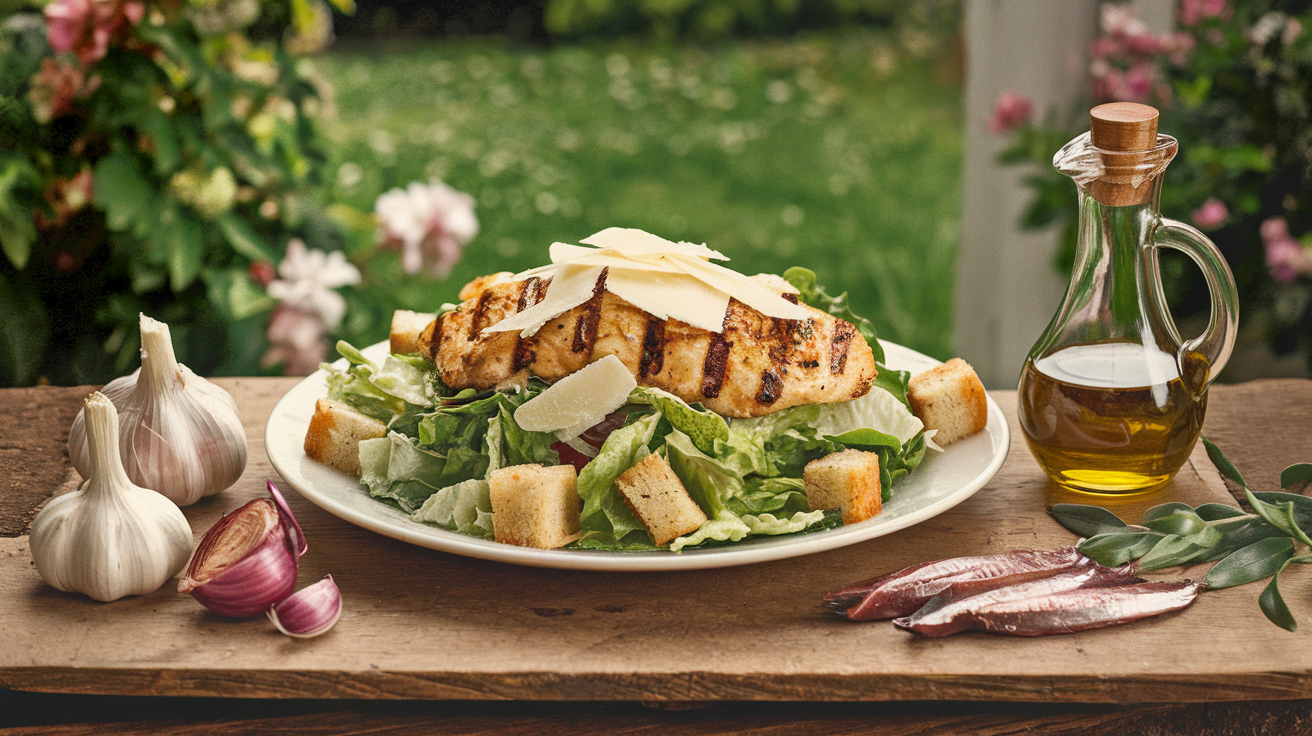
Ingredients That Define Caesar Chicken
Chicken Selection: Choosing the Perfect Cut
The foundation of any great Caesar chicken recipe lies in selecting the right chicken cut. While chicken breast is the most commonly used cut due to its lean texture and mild flavor, chicken thighs are an excellent alternative for those who prefer a richer taste. Bone-in, skin-on cuts offer additional flavor but may require longer cooking times. Opt for high-quality, organic chicken to enhance the dish’s overall appeal.
When preparing Caesar chicken, tenderizing the meat can make all the difference. Use a mallet to flatten chicken breasts for even cooking, ensuring that every bite is juicy and flavorful. For added convenience, pre-cut tenders or filets work well, especially for dishes like wraps or salads. Whether you grill, bake, or sear the chicken, choosing the right cut ensures a tender and delicious result every time.
Classic Caesar Dressing: The Secret Ingredient
No Caesar chicken dish is complete without the iconic Caesar dressing. This creamy, tangy condiment is the heart of the recipe, delivering a burst of flavor in every bite. Traditional Caesar dressing includes anchovies, garlic, olive oil, lemon juice, Dijon mustard, and Parmesan cheese. Together, these ingredients create a rich and savory base that complements the chicken perfectly.
For a modern twist, many home cooks experiment with variations like Greek yogurt or avocado-based dressings to add a healthier touch. Pre-made dressings can also save time, but homemade dressing is the gold standard for an authentic Caesar chicken experience.
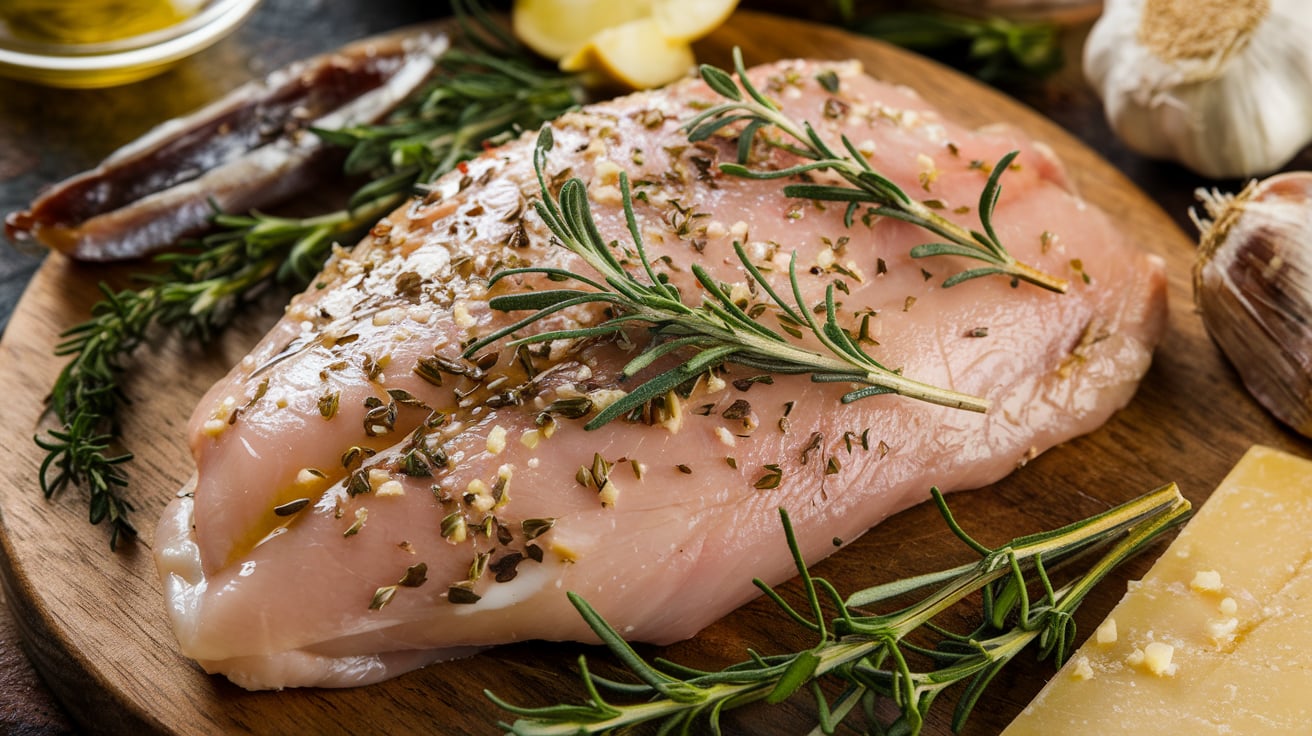
How to Make the Perfect Caesar Chicken
Preparing the Chicken: Marination Tips
The secret to flavorful Caesar chicken begins with proper marination. Infusing the chicken with robust flavors ensures every bite is a delightful blend of tender meat and zesty seasoning. Start by coating your chicken in a marinade made with classic Caesar dressing, olive oil, minced garlic, lemon juice, and a touch of Dijon mustard. Allow the chicken to marinate for at least 30 minutes; for deeper flavor, marinate it overnight in the refrigerator.
To achieve maximum flavor, make sure the chicken is evenly coated and pierced lightly with a fork before marination. This allows the dressing to seep into the meat, resulting in a juicy and well-seasoned texture. Whether you are grilling, baking, or pan-searing, this step is critical to creating unforgettable flavorful chicken.
Grilling, Baking, or Pan-Seared: Cooking Options
Cooking technique plays a vital role in the final taste and texture of Caesar chicken. Each method has its advantages:
- Grilling: Imparts a smoky, charred flavor that complements the creamy Caesar dressing. Preheat the grill to medium heat and cook the chicken for 6-7 minutes per side until the internal temperature reaches 165°F (75°C).
- Baking: Ideal for juicy results with minimal effort. Preheat your oven to 375°F (190°C), place the marinated chicken on a baking sheet, and cook for 25-30 minutes.
- Pan-Searing: Provides a golden, crispy exterior. Heat olive oil in a skillet over medium-high heat and sear the chicken for 4-5 minutes on each side.
Each method ensures a delicious outcome, so choose based on your preference or time constraints.
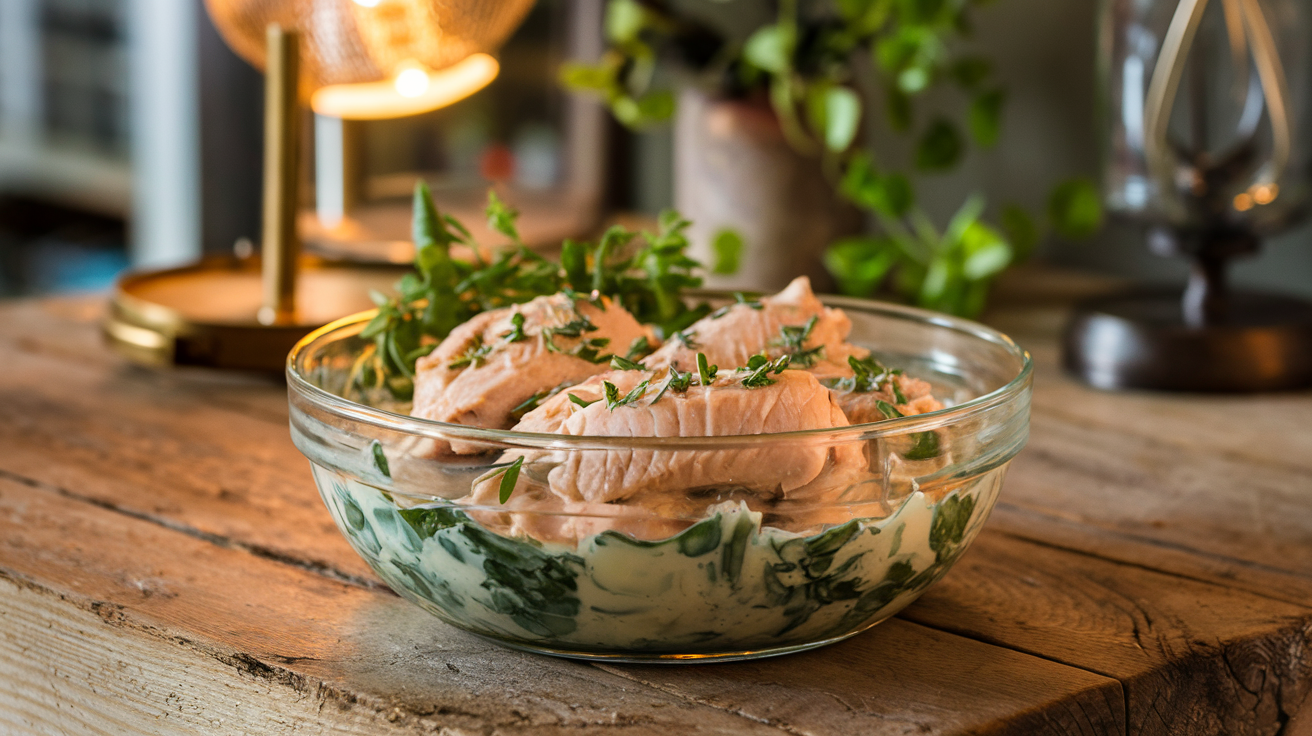
Creative Twists on Caesar Chicken
Caesar Chicken Wraps
For a portable, quick meal option, the wraps creation are a game-changer. These wraps combine the bold flavors of this dish with the convenience of a handheld dish, making them perfect for busy weekdays or casual get-togethers.
Start by grilling or baking your chicken to perfection, then slice it into thin, bite-sized strips. Use a soft tortilla or flatbread as the base, layering it with fresh romaine lettuce, cherry tomatoes, and a generous drizzle of Caesar dressing. Add shredded Parmesan and croutons for extra crunch and flavor. For a creative twist, try adding avocado slices or a sprinkle of chili flakes for a spicy kick.
Wrap everything tightly and serve it as a quick lunch, picnic item, or party snack. This versatile recipe lets you experiment with flavors while keeping the essence of the chicken intact.
Caesar Chicken Pasta
If you love hearty dishes, the pasta version is a must-try. This variation pairs tender chicken with al dente pasta and a creamy Caesar-inspired sauce for an indulgent meal.
Cook your favorite pasta—such as penne, fusilli, or spaghetti—and set it aside. While the pasta cooks, prepare the sauce by blending Caesar dressing with heavy cream, garlic, and Parmesan cheese. Toss the cooked pasta with the sauce and top it with sliced chicken, fresh parsley, and extra Parmesan. This dish is ideal for dinner parties or a cozy family meal.
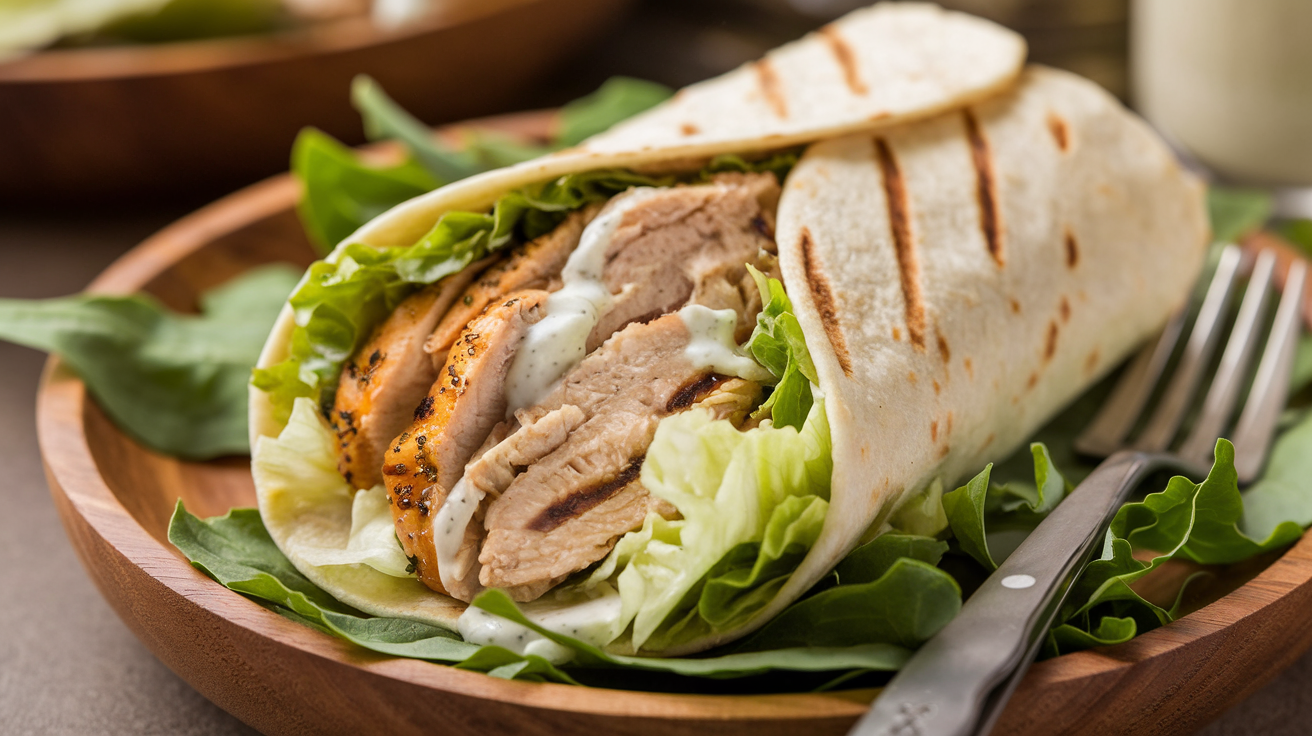
Tips for the Best Caesar Chicken
Storing and Reheating Leftovers
Properly storing and reheating Caesar chicken ensures that its flavors and textures remain intact, even when enjoyed as leftovers. Start by allowing the cooked chicken to cool completely before storing it. Transfer the chicken into an airtight container and refrigerate it promptly. When stored correctly, the recipe can stay fresh for up to three days.
For reheating, maintain the chicken’s juiciness by using gentle heat. The oven is an excellent choice; preheat to 350°F (175°C), wrap the chicken in foil to lock in moisture, and heat for 10-15 minutes. Alternatively, use a skillet with a splash of water or broth to reheat on low heat, ensuring it doesn’t dry out. Avoid microwaving whenever possible, as it can lead to uneven heating and a rubbery texture.
To use leftovers creatively, chop reheated this dish into bite-sized pieces and add it to fresh salads, sandwiches, or wraps. This versatility minimizes waste and keeps your meals exciting.
Pairing Caesar Chicken with Sides
Elevate your recipe experience by pairing it with complementary sides. For a light and refreshing option, serve it alongside a crisp side salad with a vinaigrette dressing. If you’re looking for a heartier meal, roasted vegetables like asparagus, carrots, or Brussels sprouts make an excellent match.
For carb lovers, garlic bread or creamy mashed potatoes are classic choices. Wine enthusiasts can pair Caesar chicken with a crisp white wine like Sauvignon Blanc, which complements the tangy flavors of the Caesar dressing. These thoughtful pairings enhance the overall dining experience and make this dish a versatile centerpiece.
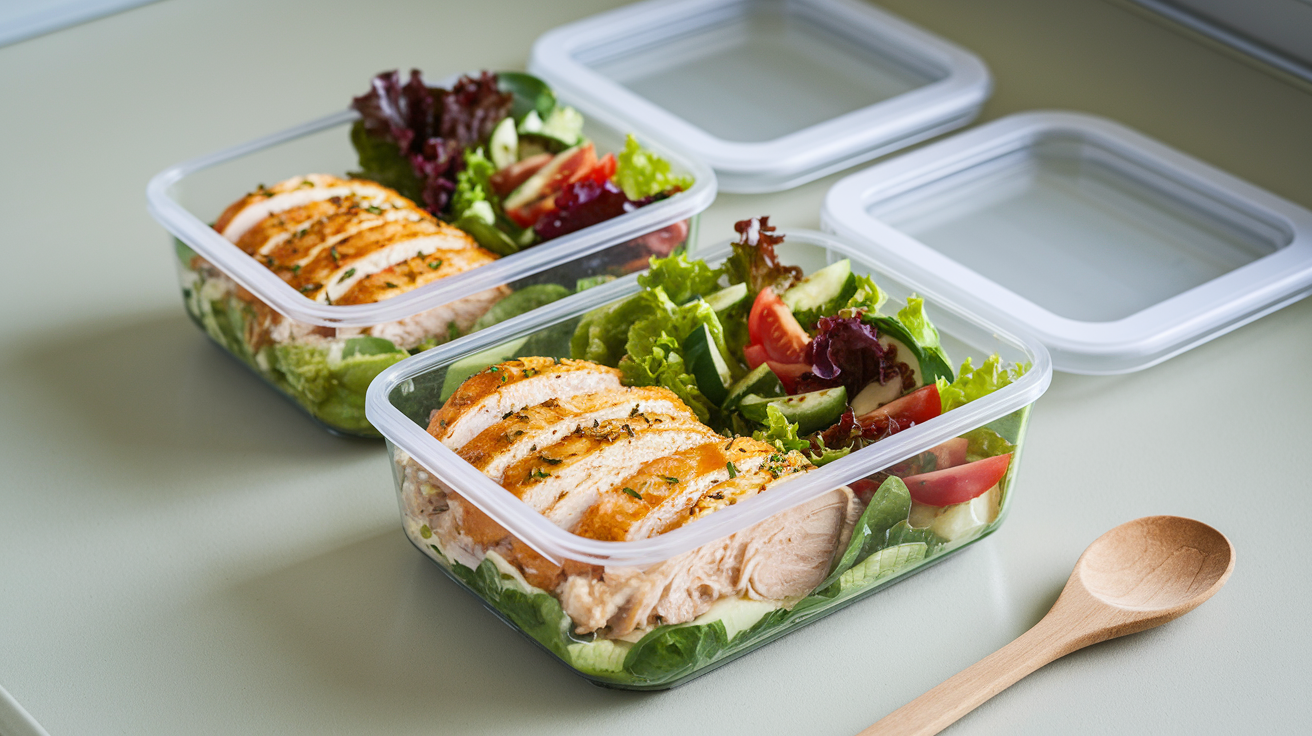
FAQs
What Makes Caesar Chicken Different from Other Chicken Dishes?
Caesar chicken stands out because of its unique combination of tangy Caesar dressing and tender, perfectly cooked chicken. Unlike traditional grilled or baked chicken, this dish incorporates the bold flavors of anchovies, garlic, lemon juice, and Parmesan cheese from the Caesar dressing. These ingredients elevate the dish, giving it a distinctive taste that’s both creamy and zesty. Additionally, the recipe is highly versatile, lending itself to various preparations, including wraps, pasta, and salads.
Can Caesar Chicken Be Made Dairy-Free or Gluten-Free?
Yes! With a few substitutions, Caesar chicken can easily fit into dairy-free or gluten-free diets. For a dairy-free version, use plant-based Parmesan cheese and a dressing made with cashew cream or avocado. Gluten-free adaptations include using gluten-free breadcrumbs for croutons or ensuring the dressing does not contain wheat-based thickeners.
Moreover, if you’re preparing chicken wraps, opt for gluten-free tortillas or serve the dish as a salad bowl to eliminate gluten entirely. These adaptations maintain the dish’s signature flavor while catering to specific dietary needs.
How Do I Prevent Caesar Chicken from Becoming Dry?
To avoid dryness, focus on two key factors: marination and cooking method. Marinate the chicken for at least 30 minutes to infuse it with moisture and flavor. Additionally, use a meat thermometer to ensure you cook the chicken to an internal temperature of 165°F (75°C). Overcooking is a common cause of dryness, so keep an eye on the chicken while it cooks.
Conclusion
The Versatility
Caesar chicken has cemented its place as a beloved dish thanks to its versatility and universal appeal. It brings together the best of flavors and textures, blending tender, flavorful chicken with the tangy, creamy richness of Caesar dressing. From wraps to pasta dishes and low-carb salad bowls, this dish fits seamlessly into countless culinary creations. Its adaptability ensures there’s a variation of flavorful chicken for every occasion, whether it’s a casual lunch, a family dinner, or an elegant dinner party.
A Healthy and Flavorful Choice
What makes this recipe even more remarkable is its ability to balance indulgence with health-conscious choices. By using lean chicken cuts, fresh greens, and homemade Caesar dressing, this dish becomes a wholesome yet satisfying option. With substitutions, it can cater to various dietary needs, including gluten-free and dairy-free preferences, ensuring that everyone can enjoy this timeless recipe.
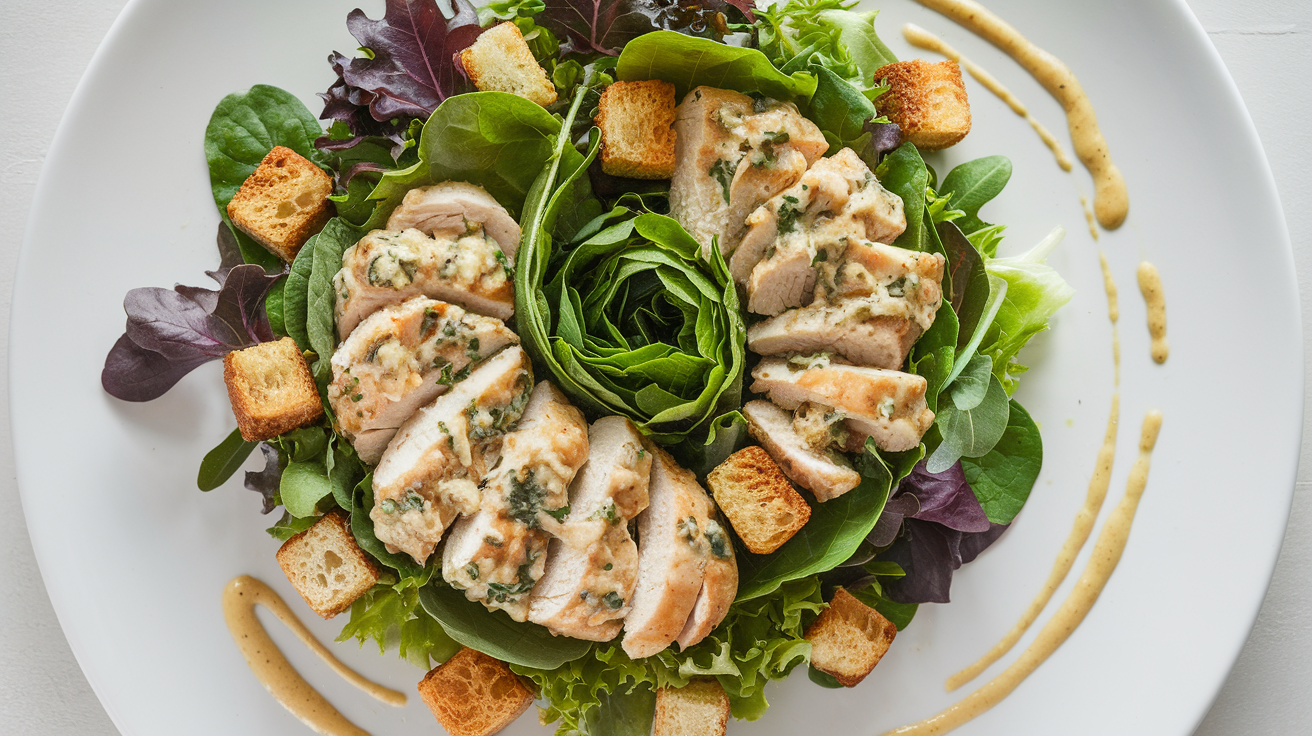
Your Turn to Master Caesar Chicken
As we’ve explored, the perfect recipe begins with high-quality ingredients, thoughtful preparation, and careful cooking techniques. With this guide, you’re equipped to make the most flavorful, tender, and visually appealing . Whether you stick to the classic recipe or get creative with twists and pairings, this dish is sure to become a staple in your kitchen.
Why wait? Gather your ingredients, experiment with the techniques and ideas shared here, and experience why Caesar chicken is a recipe that never goes out of style.

